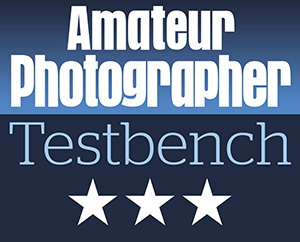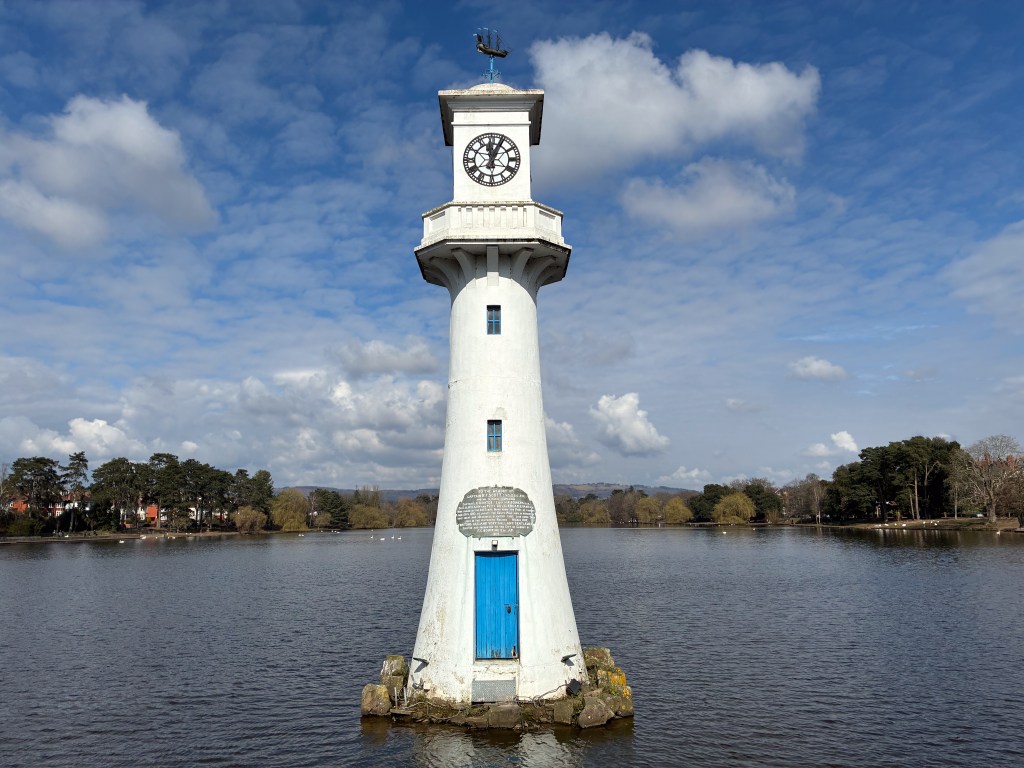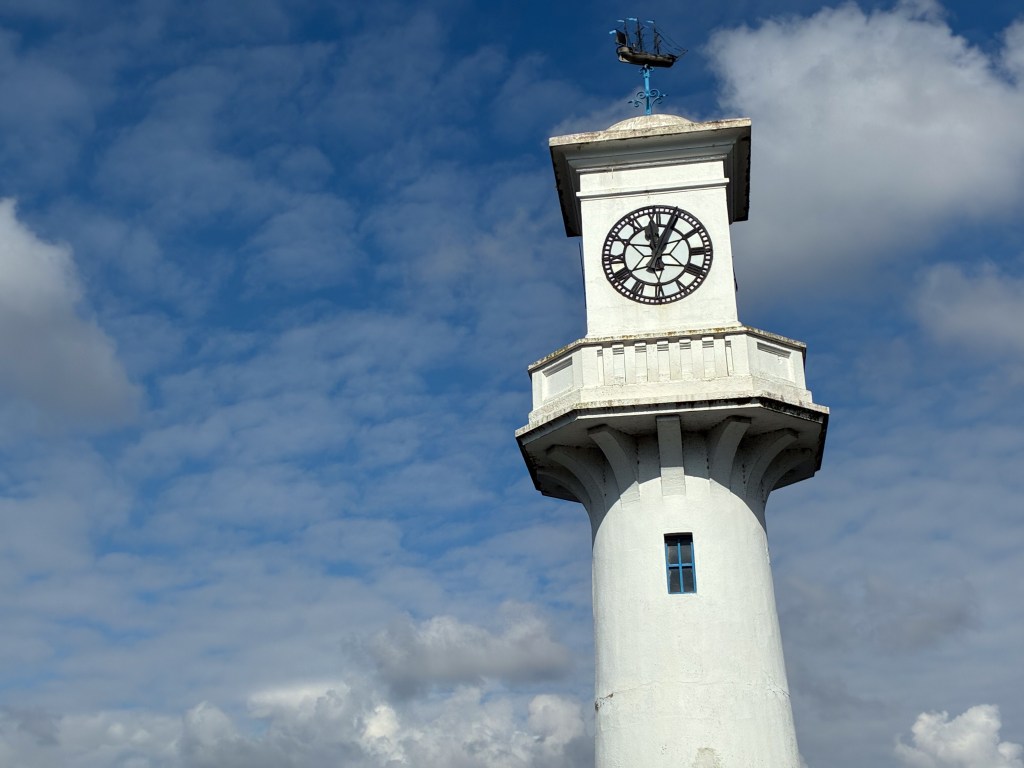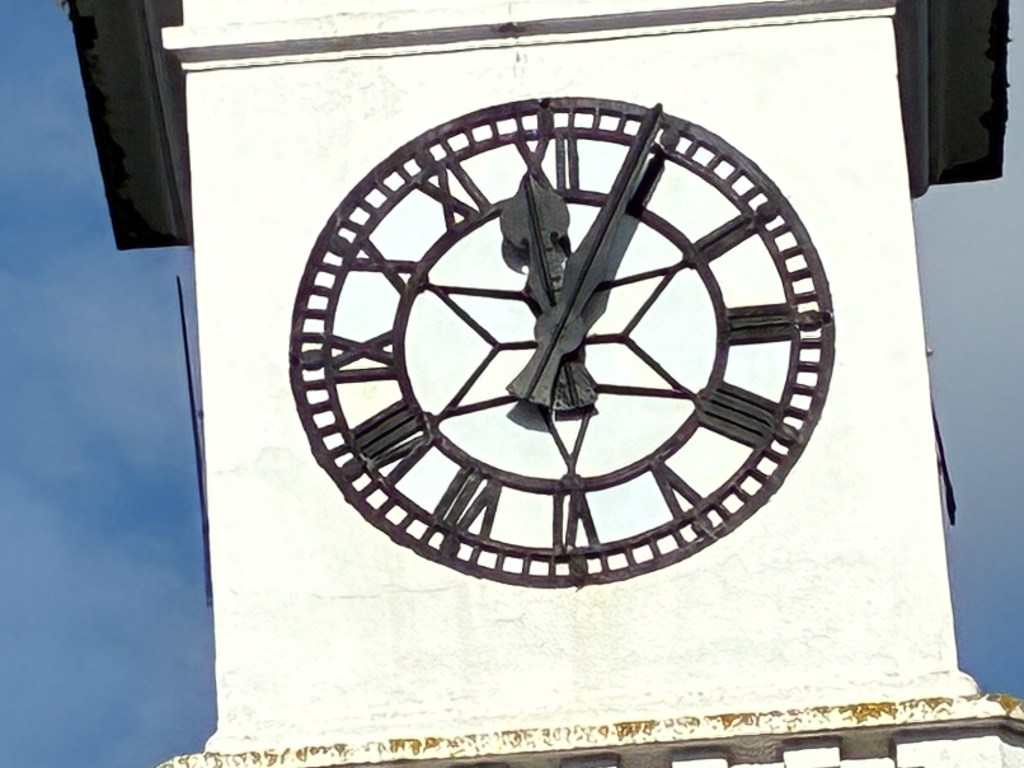Amateur Photographer verdict
The 16e makes some sense if you’re on a budget but want a recent iPhone – with Apple Intelligence. But for most, I’d suggest older models.- Cheapest most recent iPhone
- High resolution camera sensor
- Tough construction for a “cheap” phone
- Apple Intelligence can be useful for photo editing
- Expensive compared to similar Android models
- Just one camera
- Only available in black or white
- Low resolution selfie camera
- Restricted Portrait mode
Apple’s latest releases usually end up at the top of our best iPhones for photographers list, as well as our best smartphones for photographers list. But, the company has a reputation for making expensive models. Step forward the iPhone 16e, which aims to bring some of the latest iPhone technology in a cheaper device. With the recent advent of the iPhone 17 series, it may be about to get cheaper still – keep your eyes peeled for impending offers in the phone markets.
iPhone 16e At a Glance
- 48MP wide camera, f/1.6 aperture, 26mm equivalent – standard output 24MP. OIS.
- 12MP f/1.9 selfie camera (no AF)
- 4K 30fps video
- 6.1-inch Super Retina XDR OLED screen, 2532 x 1170 pixels at 460ppi
- IP68 rating for dust and water resistance
- iOS 18 with Apple Intelligence
- A18 Processor
Starting at $599 / £549, the iPhone 16e is a lot more affordable than the iPhone 16 Pro (starts at $999/£999), and offers a still significant cost-saving over the standard iPhone 16 (starts at $799/£799). You’ll pay more if you want more memory.
But, as you might expect from the lower price point, there are several sacrifices to be made – and for photographers at least, that’s quite a lot.

With the iPhone 16e, you only get one camera. At a time when even entry-level, sub $300/£300 Android phones have at least two camera units, this feels like a retrograde step.
That said, Apple says that the camera is “2-in-1”, so although it can’t offer an ultrawide, it can give a good approximation of a 2x telephoto, thanks to the high-resolution that this single camera offers. We’ll see how well that delivers later.
I’ve spent quite a while now with the iPhone 16e, shooting with it alongside my iPhone 16 Pro. Safe to say that the overall experience isn’t – and shouldn’t – match up, but, it’s left me wondering if you actually do need more than one camera, especially if it’s just for snapshot photography? Let’s find out…
iPhone 16e Features
Stepping back to only have one camera on your phone feels like going back in time. But, safe to say that the quality here is a marked step up from the single-lens iPhone cameras of yesteryear.
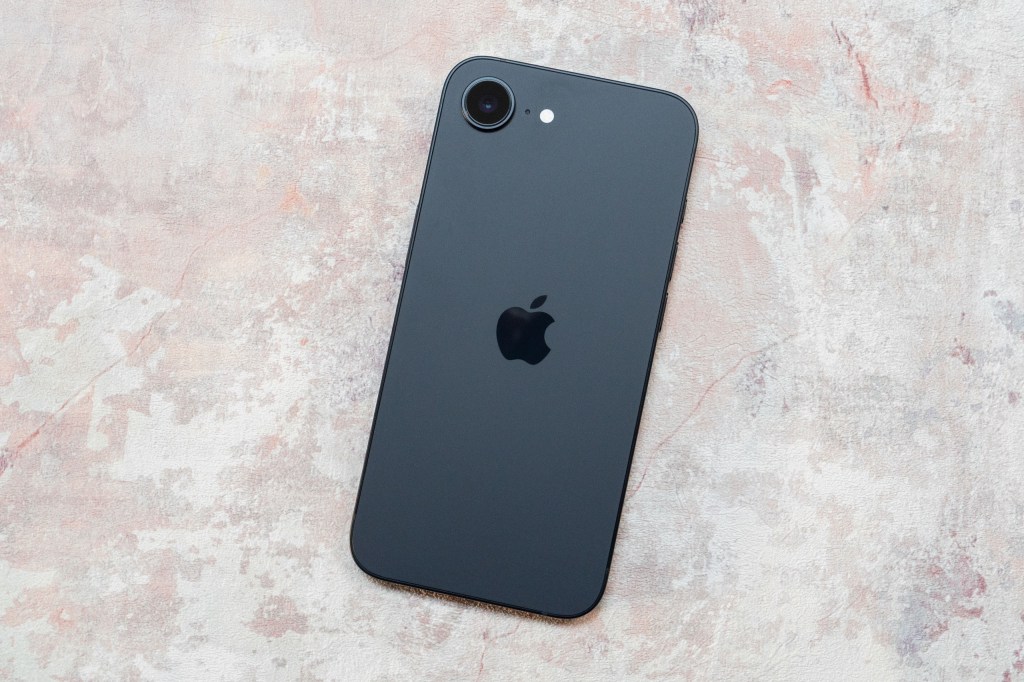
That single camera has a 48MP sensor with an f/1.6 lens offering 26mm (equivalent). This sounds similar to the main camera found in the iPhone 16 or iPhone 16 Pro, but it has been designed especially for iPhone 16e so isn’t quite the same. Still, just like the iPhone 16 Pro, its standard output is 24MP.
There is no other lens here, but Apple claims that the camera is “2 in 1” because it offers a 2x “lossless” zoom – essentially a digital crop from the centre of the high-resolution sensor. You can also zoom digitally up to 10x. There’s no way to shoot ultrawide images with this phone.
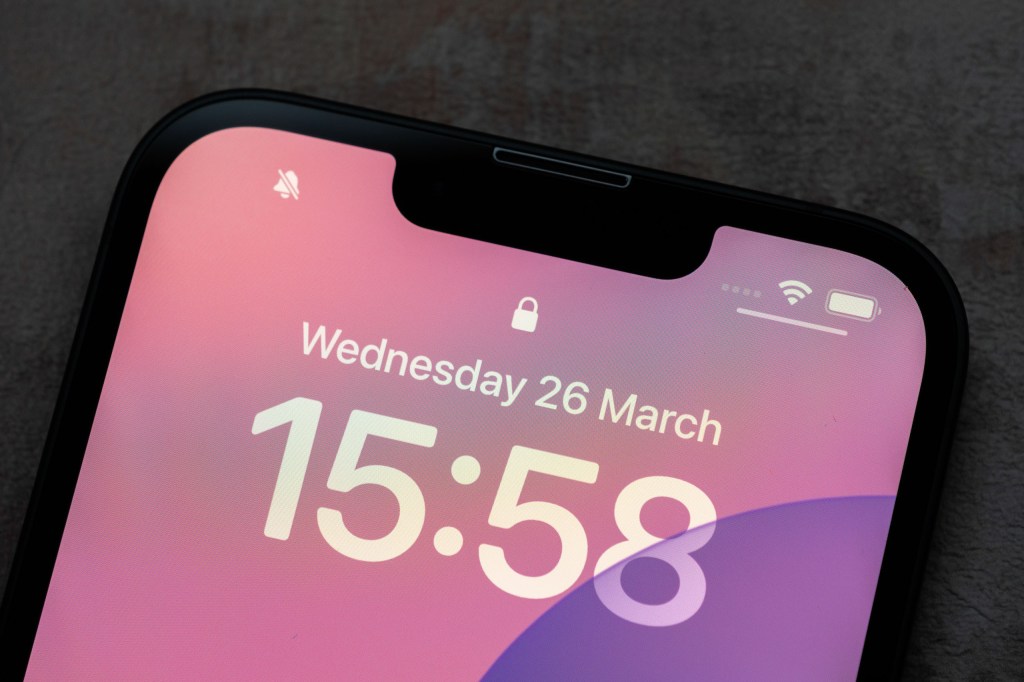
On the front of the phone there is a 12MP f/1.9 selfie camera, which doesn’t have AF. Other features include 4K video recording, an IP68 rating for water and dust resistance, and inbuilt Apple Intelligence which, for us photographers, can be used to perform edits on photos.
iPhone 16e Handling and Design
The iPhone 16e follows more-or-less the same form and design as others in the iPhone 16 series. It’s a fairly minimalist – some might say muted – design, and unfortunately it’s only available in black or white. I’d have liked to have seen some more fun colours for its audience, but I suppose this matters less now that most people have them in a phone case for protection.
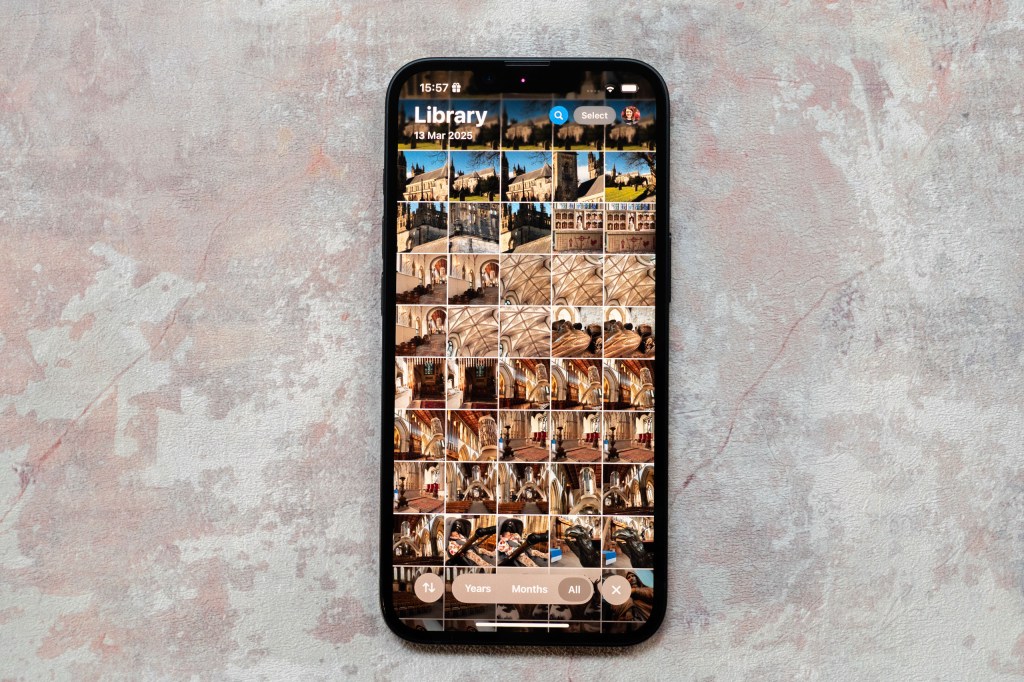
At 6.1-inches, the screen is slightly smaller than the iPhone 16 Pro (16.3-inches), and is the same size as the older iPhone 16 Pro. The 16e has the same boxy, rounded off edges, and it’s quite good to see that Apple has given it IP68 water and dust resistance, meaning you can submerge it in 1-metre depths for up to 30 minutes at a time. Or, more realistically, it’ll be fine if you drop it in the bath or get caught in a rain shower.
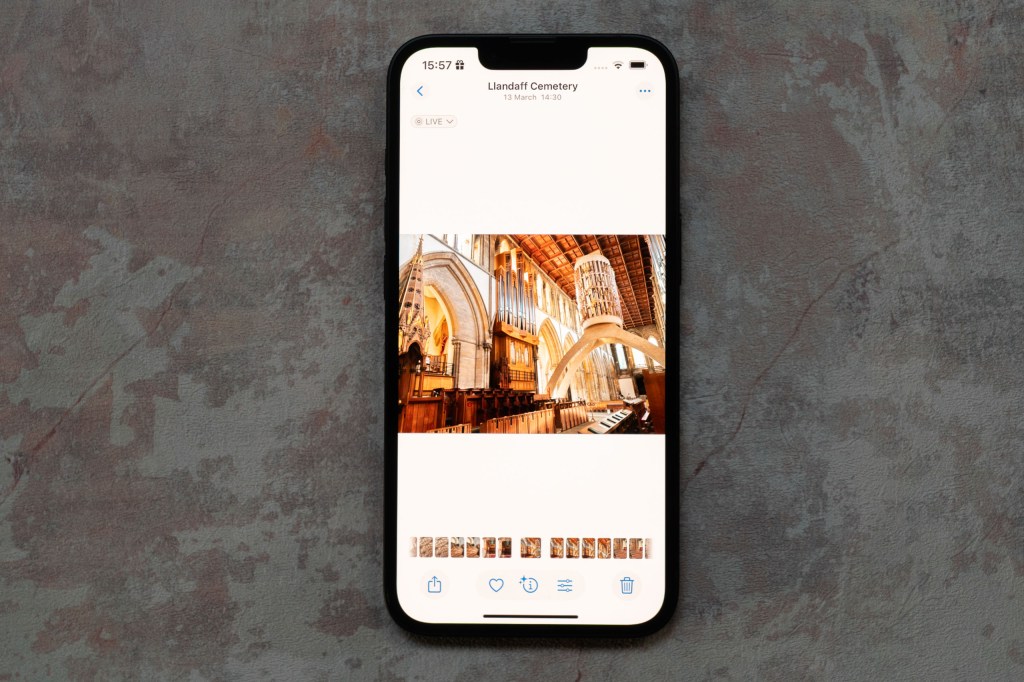
Additionally, it also has a Ceramic Shield front, which Apple claims is the toughest smartphone glass on the market. Within reason, it should resist breaking from being dropped. The screen is “Super Retina”, so it has a similar pixel resolution and the same ppi, but there are some key differences. For example, you don’t get the “Always On” functionality (showing you the time and other key information), nor the “Dynamic Island” (which you can use to do things like control the music that you’re playing and so on).
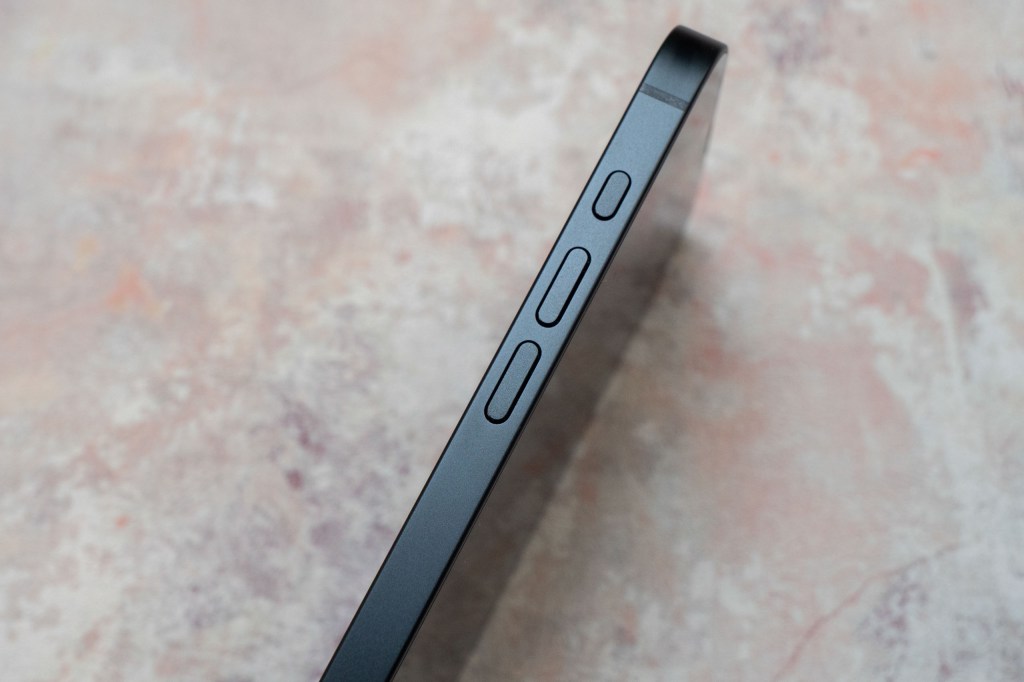
The iPhone 16e also has the same action button as debuted in the iPhone 15 series. This can be assigned to a number of different functions, including launching the native camera app. Alternatively, you can set one of the on-screen “widgets” to do the same. Unlike the 16 Pro/Max, there’s no Camera Control button, for releasing the shutter and zooming. You can, however, use one of the volume up/down buttons to fire off the shutter release if you want to use a physical button.
iPhone 16e Native Camera App
The relatively straightforward native camera app is in many ways the same as found on other iPhone models. You’ll probably either like that or you won’t – for example there’s no “Pro” mode, and for this model, you can’t shoot in raw format either. Personally, I never shoot raw with my phone anyway so it wouldn’t bother me, but this may be a deal breaker for others.
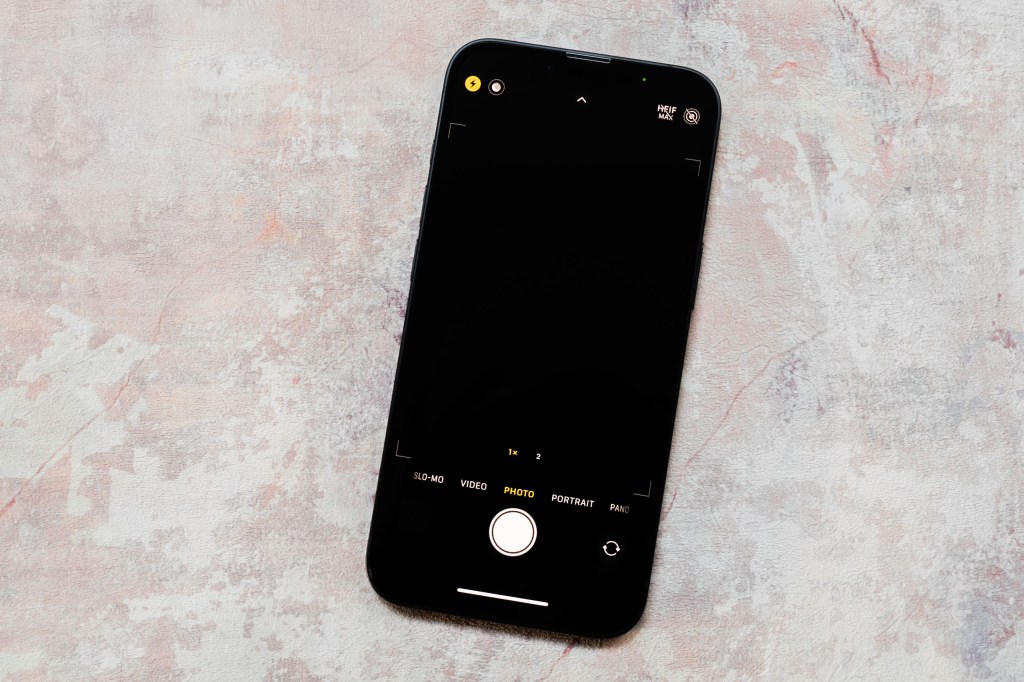
In the standard Photo mode, you can switch between 1x and 2x – remembering that this is the same lens, the 2x is just using the central portion of the 48MP sensor. You can’t tap the 1x icon to quickly jump between 24/28/35mm points, but can pinch to zoom to the equivalent (1.2x and 1.5x). You can also zoom beyond 2x, up to a maximum of 10x.
Other options in the Photo mode include the ability to switch on Live Photos, switch on/off flash, and to use either HEIF or JPEG image formats. When shooting in low light, a Night mode should automatically activate. Swiping up from the main screen will reveal a set of additional shooting options, including Photographic Styles, aspect ratio and even the ability to alter exposure compensation. If shooting in low light, you’ll also be able to adjust how long the camera shutter stays open – for example if you’re working with a tripod and want a longer exposure.

There is a dedicated Portrait mode for your people shots. Unlike the rest of the iPhone 15 and iPhone 16 series, the standard Photo mode will not automatically detect when you’ve photographed a person, allowing you to add in the simulated background blur after the fact. This is something I use all the time on the iPhone 16 Pro, so it’s a real shame not to have it here – especially as this is not a hardware limitation, but a software one. I know Apple “has” to give people a reason to spend more on the higher priced iPhones, but considering the target audience here – who is likely to take a lot of people shots – it would have been a nice one to throw in. In short, to shoot portraits with a blurred background effect, you must launch the Portrait mode first.
It’s also worth nothing that the 16e also does not recognise other non-human subjects either, such as pets – again, another software limitation that seems particularly harsh. If you try to use Portrait mode with something other than a human, the phone will simply say “No person detected” and not create the effect. My dog is personally affronted.
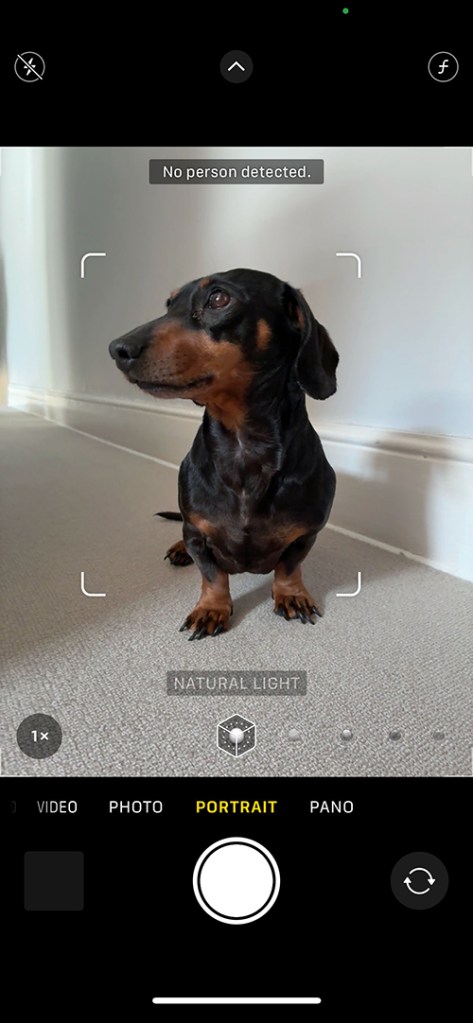
As there’s no ultrawide, that means there’s also no macro mode for the 16e. You’ll need a different iPhone model if you like taking close-up shots. This is a bit more understandable as it’s a hardware restriction.
A range of Photographic Styles can be used with the iPhone 16e, but again, you don’t get the latest generation as seen in the other series 16 phones. Essentially, that means that you can’t fine tune things such as colour and intensity – although you can still adjust “tone” and “warmth”. There’s a separate set of digital filters (which have actually been removed from other iPhone models) which you can also use. Note that if you use a Style, you’ll be stuck with it and can’t remove it – even if you shoot in the HEIF format. Digital filters can be removed / changed.
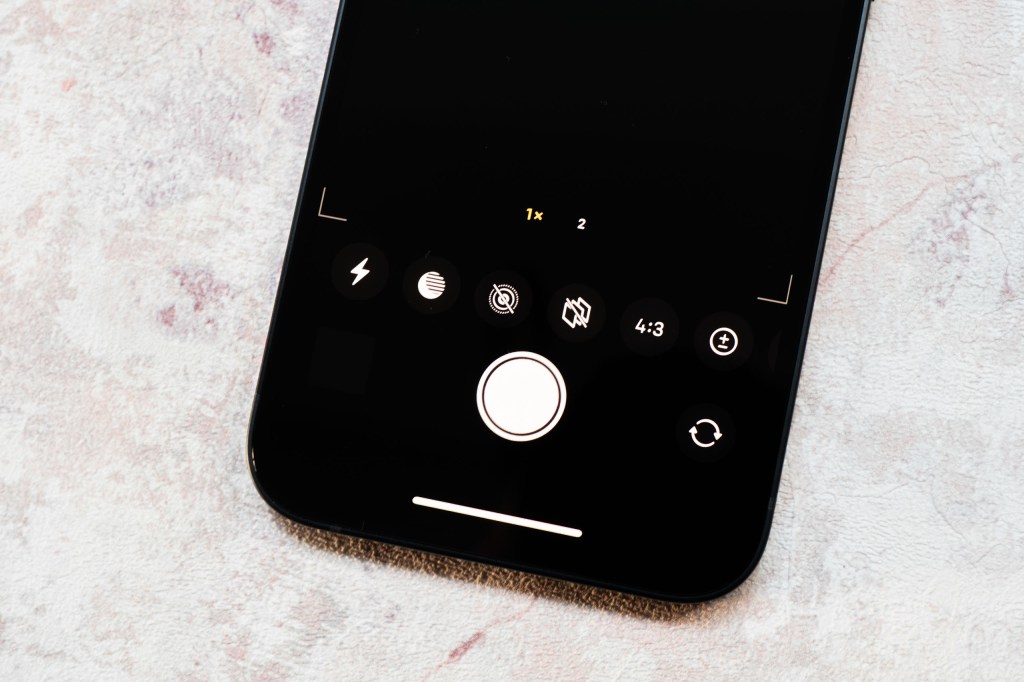
There’s a standard Video mode (where you can shoot up to 4K 30fps), as well as Slo-Mo and Timelapse options. There’s no “Cinematic” option to give a shallow depth of field effect as found on other iPhone models.
Apple Intelligence can be used to help “Clean Up” images. Tap, brush or circle what you want to remove and the phone will usually do a decent job of that – especially if the background is otherwise fairly clean. For example, you can get rid of a stray tourist wandering through an empty street scene. This feature is something you won’t find on some older iPhone models (such as the iPhone 14 series, or the non-Pro iPhone 15 variants), so this is a benefit of the iPhone 16e.
There’s two ways to look at what Apple has done with the native camera app of the iPhone 16e. Arguably, it’s aimed it at a less advanced audience and therefore stripped out some things which could be considered extraneous. On the other hand, it’s removed genuinely useful things for no other reason than to force you to buy an (even) more expensive model. You can judge for yourself which is true.
iPhone 16e Image Quality and Performance

Although the 16e only has one lens, the one it has is very good and produces great images. There are lovely colours, plenty of detail and in general the exposures are pretty well balanced – this is when shooting in good light.
If light is good, you can also get some good results from the “2x” option, but beyond that, the results are more hit and miss, with smoothing and loss of detail. I found that I missed the ability to shoot ultrawide, but that’s a personal preference of mine that not everyone will share.

Portrait mode produces some good results for people. As mentioned in the section above, I’m very disappointed that I can’t use it for non-human subjects, but, thankfully for pictures of subjects such as my daughter it does a good job with attractively blurred backgrounds – despite only having one lens available to create the pictures with.
In Low Light, images from the 1x option are decent enough, with some good detail and not too much blurring. There’s better results from the iPhone 16 Pro, but unless you’re scrutinising pictures very closely, the results are more than acceptable. With the 2x option, the results are pretty poor, however, which is not entirely unexpected from a crop.
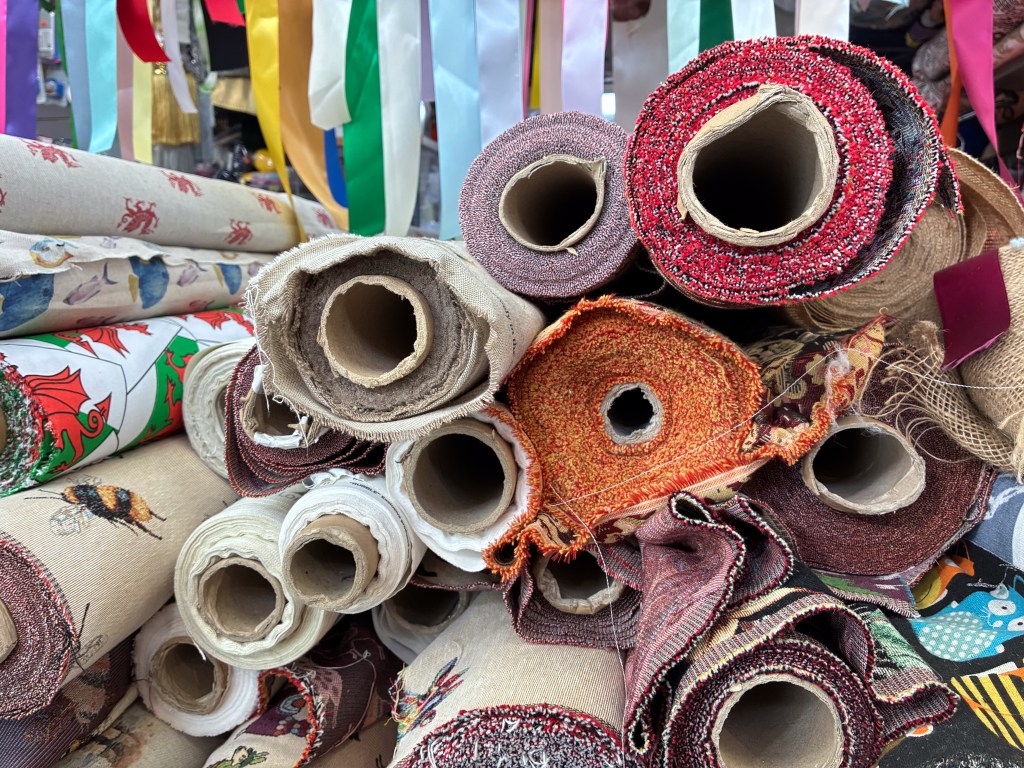
Although there is no macro mode, you can get some fairly good reasonably close-up shots. You won’t be able to get super close, but for things which are a bit bigger in the frame, you can get some nice results.

As for the selfie camera, I’d put it on par with the regular iPhone 16/16 Pro camera. It’s fine, and you can also produce shallow depth of field effects here – but remember to switch to Portrait mode first.
iPhone 16 Value for Money
At a starting price of $599/£549, the iPhone 16e is low priced by Apple standards, but is expensive compared with similarly specced Androids. This may be about to drop now that the iPhone 17 series has launched, so it will be interesting to see the impact on prices for those in the 16 series now – there could yet be some value offers around.Therefore, your definition of value will depend on what you’re looking for and expecting.

If on the other hand, you’d be happy to step back to an older model, such as the iPhone 14 or iPhone 15 series, you could likely pick up a better deal and have a better performing model. You can get even cheaper deals if you’re happy to go second hand too. For example, right now, you could pick up an iPhone 14 Pro on the second hand market for around £400 – significantly cheaper than the iPhone 16e, but with the benefit of three well-performing lenses.
You wouldn’t get Apple Intelligence, though, so weigh up your priorities. For the same price as the iPhone 16e, you can pick up an iPhone 15 Pro second hand, get three good lenses, *and* enjoy all the benefits of Apple Intelligence, too.
For those who want something brand new out of the box, take a look at the iPhone 15 or the iPhone 16. Those will set you back from $699/£699 or $799/£799, but, you will get two lenses so it could be worth it.
Anybody that isn’t wedded to the idea of an Apple phone at all could look at brand new budget Android models. Here you’ll find the likes of the Google Pixel 9a, with prices starting at £499 and equipped with two lenses. Or there’s the Samsung Galaxy A56, with that you’ll get three lenses for £499.
Overall, the iPhone 16e is expensive for what you get. Considering the iPhone 16 Pro range competes well with other flagship models, that’s disappointing.
iPhone 16e Verdict
As an iPhone user of some years, I didn’t expect to love the iPhone 16e. Of course it doesn’t match up to a Pro model at its price. But, the things which you *don’t* get are quite surprising considering this is still some way more expensive than equivalent models from other (Android) brands.
Although image quality from the one and only camera is pretty good, there are certainly times when you do miss the ability to go extra wide, or to zoom further than 2x and still get good results. Maybe you wouldn’t miss either of those options, but when even rivals which cost half the price of an iPhone give you that, it’s a big shame.
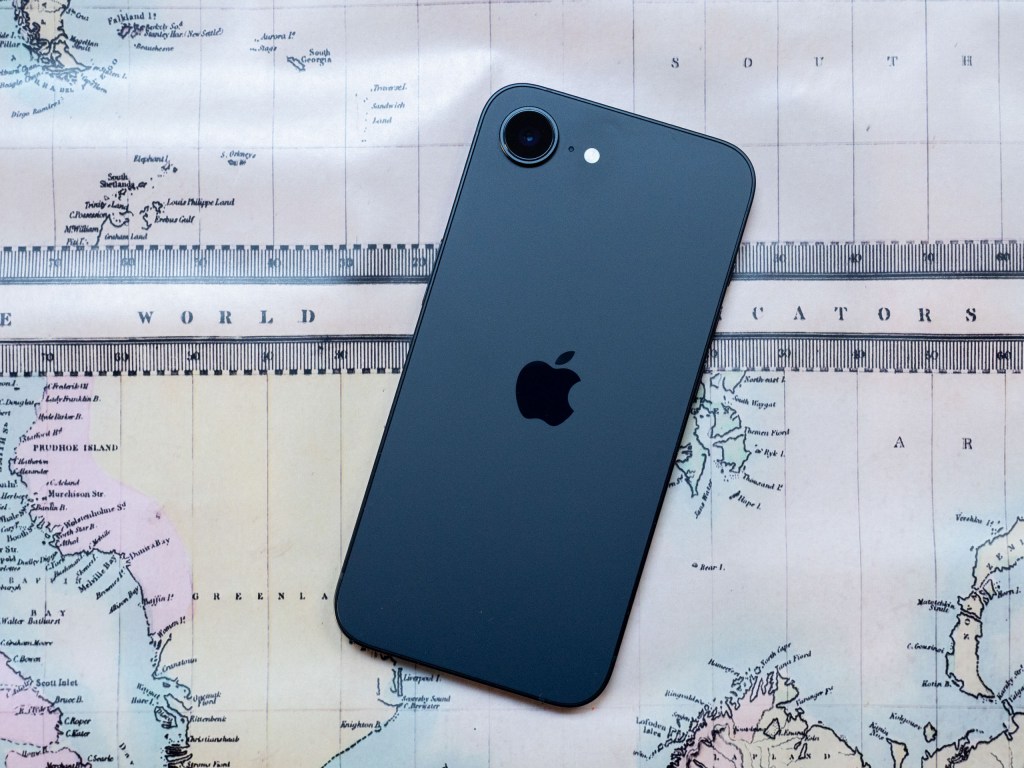
Moving past the hardware limitations, there’s the software limitations which are more frustrating. Not being able to take a shallow depth field picture of my dog. Apple – wtf, come on, that’s just cruel, right?
Realistically, there’s very little advantage of buying an iPhone 16e unless you’re absolutely determined that you want an iPhone with a 16 in the name and only have a maximum of $600/£600 (starting price) to play with. Perhaps you really, really want Apple Intelligence – that’s about the only benefit I can think of here.
Personally, if my budget was low, I’d head towards the second-hand market. Being able to pick up an “excellent” condition iPhone 14 Pro, with its three lenses and more camera features, for less than the iPhone 16e makes it much more appealing. Or, I’d probably save up a bit longer and spend a bit more to get either the iPhone 15 or iPhone 16 (isn’t this exactly what Apple wants – well, perhaps).
Of course, I could move to the Android dark side and get better value for money – notwithstanding that I know the advantages of being in Apple’s ecosystem (as I’m in it), so would not deny that as “a thing”! A good example is the Samsung S24FE, which is about the same price as the iPhone 16e, but with three lenses, a raft of AI editing tools, and, most importantly, the ability to create pet portraits with ease. It’s also available in more interesting colours too. Then there’s the Google Pixel 9A, only two lenses this time, but starts at $499/£499.
Overall, while the iPhone 16e isn’t a bad phone – it’s my opinion that it is overpriced for what you get and, for most people, I wouldn’t recommend it.
